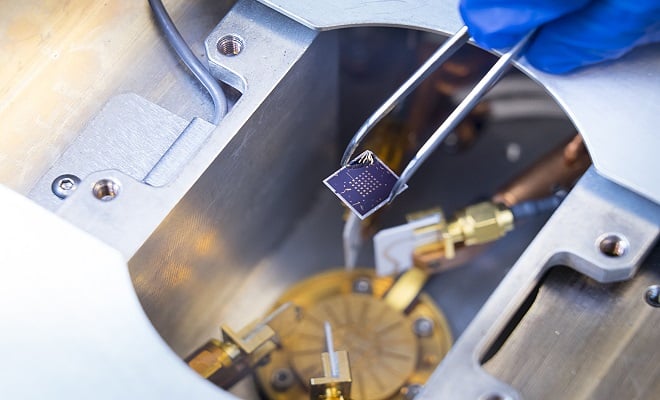Processing and storing of information by semiconductor chips at the same time can lead to the creation of memory devices that are even more compact than thier present counterparts and faster than what we can imagine.

Millions of transistors are incorporated in a computer chip to create a processor. This processor performs the task of processing data before sending it to a separate memory chip for storage. Now, how about having a single chip that can do both information processing and storing at the same time?
This is what electronics engineers from Purdue University have achieved. They have developed a method with the help of which millions of tiny switches used to process information – called transistors, can be combined with a high-performance ferroelectric RAM for storing information.
Semiconductor-based ferroelectricity
The process of integrating both the transistors and the RAM had been going on for decades but without any success. This mainly occurred due to issues caused by the ferroelectric material acting as an insulator to the silicon transistors, which resulted in no flow of electricity and hence, no computing.
To overcome this, the engineers used a material called alpha indium selenide. This material not only had ferroelectric properties, but also resolved the earlier issue to a great extent.
“We used a semiconductor that has ferroelectric properties. This way two materials become one material, and you don’t have to worry about the interface issues,” said Peide Ye, Professor of Electrical and Computer Engineering, Purdue University.
The end result was the creation of a ferroelectric semiconductor field-effect transistor.
Greater current flow
The material, alpha indium selenide, has a smaller band gap, which was beneficial for possessing semiconductor properties without affecting its ferroelectric characteristics. This enabled a smooth flow of electricity.
According to Ye, more current flow makes chips dense and energy efficient. A material that is several nanometres thick can keep electrodes on either side of a tunneling junction much smaller, which could be useful for building circuits that mimic networks in the human brain.
The above technique has been detailed in the paper titled ”A ferroelectric semiconductor field-effect transistor” and published in the journal Nature Electronics.






